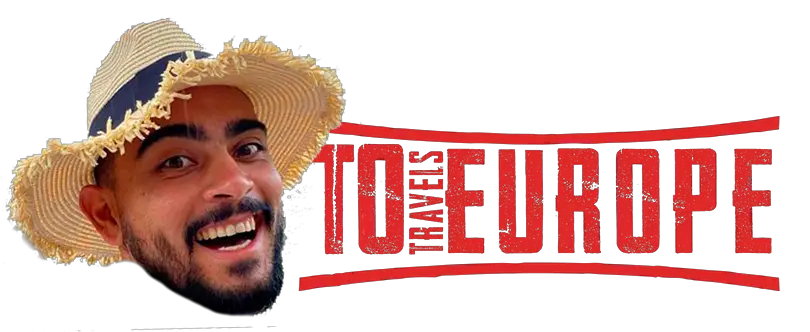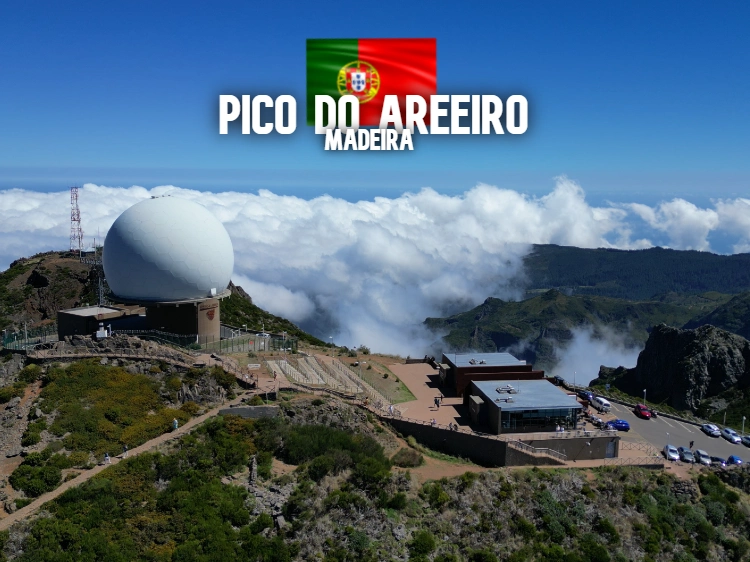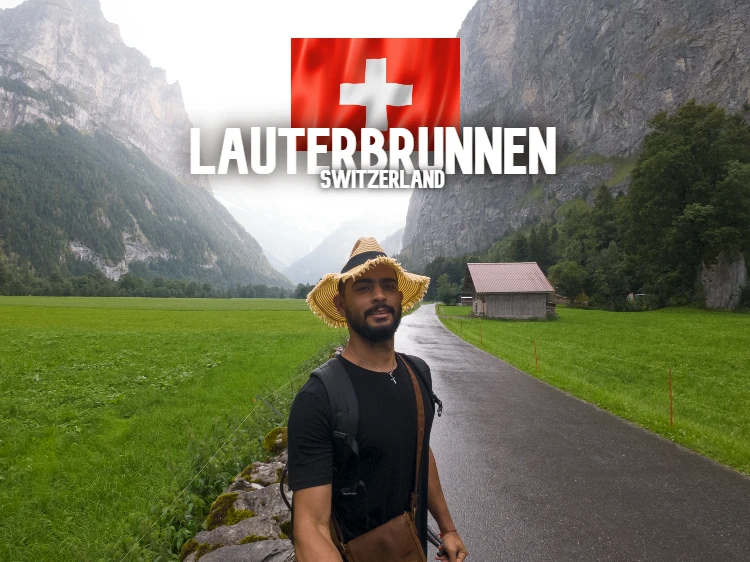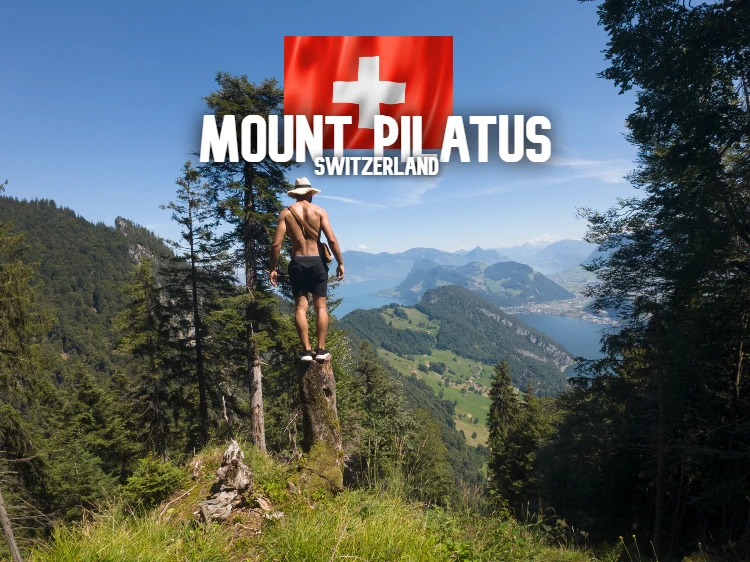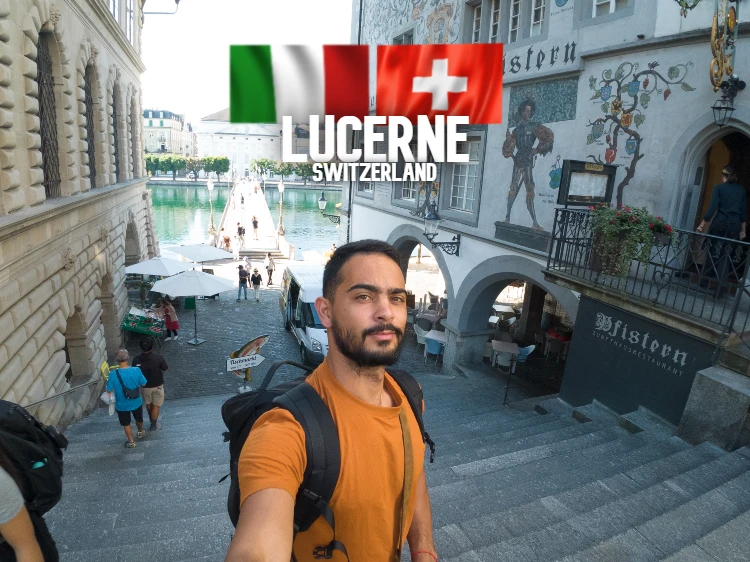Sunday, a day of trouble and problems. It depends on your point of view, finding out that the metro in Paris closes from midnight, so having to take a night bus called the Noctlien, which runs every hour, and getting home at almost 4am, is fine, after all, we’re in Paris.
Starting the day, we woke up around 11:00, we were so tired and needed a lot of sleep. We had a respectable breakfast prepared by Grace, she made crepes, something very normal to eat in Paris, Josue and I went to buy baguettes, orange juice and nutella. Yes, he wanted to buy nutella to eat with the crepe, he’s right. To go with it, there was also a croissant, toast, a doughnut and jam. I’m not used to this kind of breakfast, very sweet, it seems very French to me. You can tell me if you also eat this for breakfast in Paris. Well, with a breakfast like that I had energy for the whole day.

So we went out to the station, back to Boussy St-Antoine station to catch the D train, and then the A train at Gare de Lyon. We went to Charles de Gaulle-Étoile once again and arrived at the Arc de Triomphe to take pictures during the day.
Arc de Triomphe: Tribute to the soldiers who died for France
There was an event going on there, they were playing the trumpet and there were some well-dressed guards in elegant clothes. So we went there to see what it was all about, I recorded some videos and took photos, very interesting. I found out what was going on when I got back to Portugal, and a friend told me that it was a tribute to the people who died in the war for France.
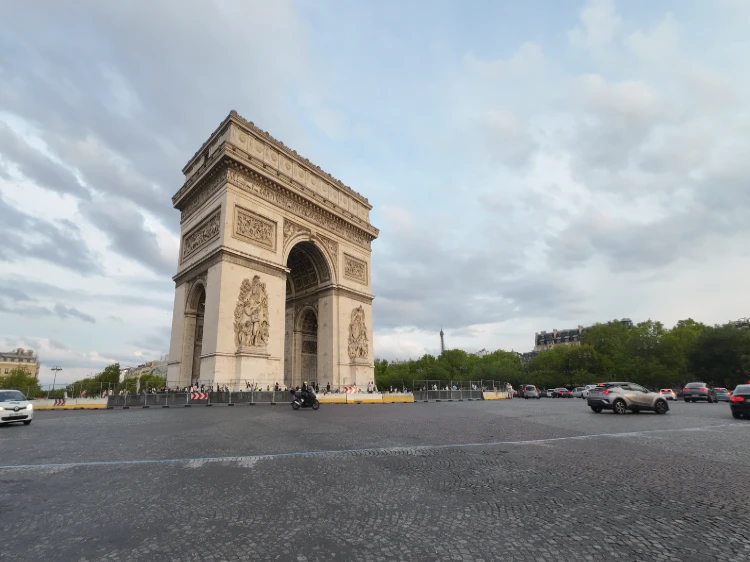
On the ceiling of the Arc de Triomphe there are the names of those who died at war for France. It was a tribute that has taken place every day since November 11, 1923, when the national flame on the ground above a symbolic tomb is rekindled. That tomb is also called the Tomb of the Unknown Soldier. It is a beautiful tribute to the soldiers who died fighting for France, so that they would never be forgotten. The ceremony is free and open to the public.
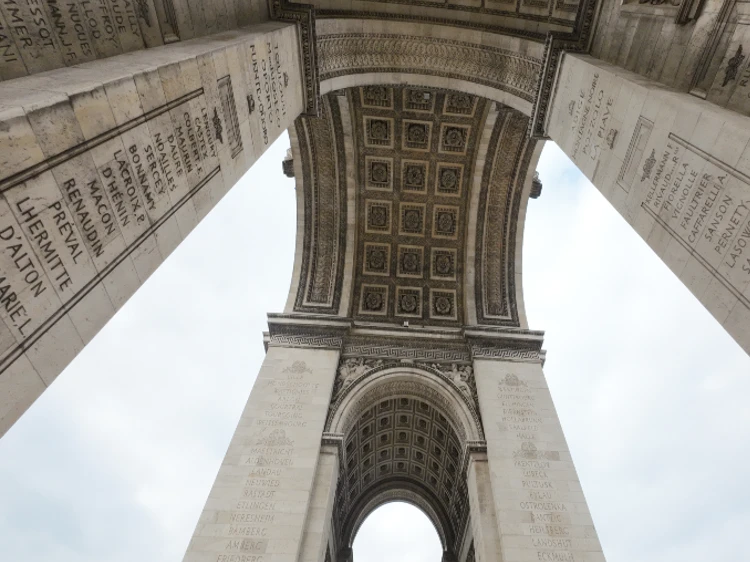
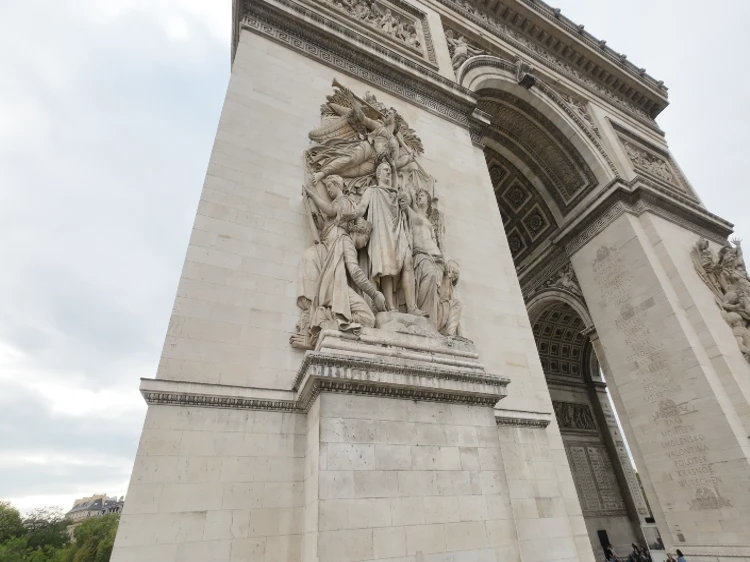
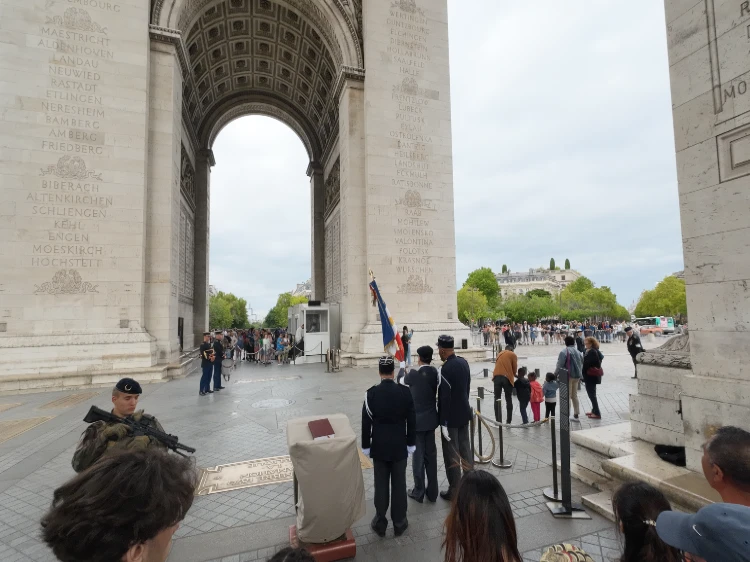
Leaving there, we headed towards the tower, after all, we wanted to climb to the top. We walked down the same Av Marceau and came across a street performance, some street artists doing their thing, dancing or whatever. It looked interesting, they knew how to hold the public’s attention. we decided to stop at a Lebanese restaurant and try the food.
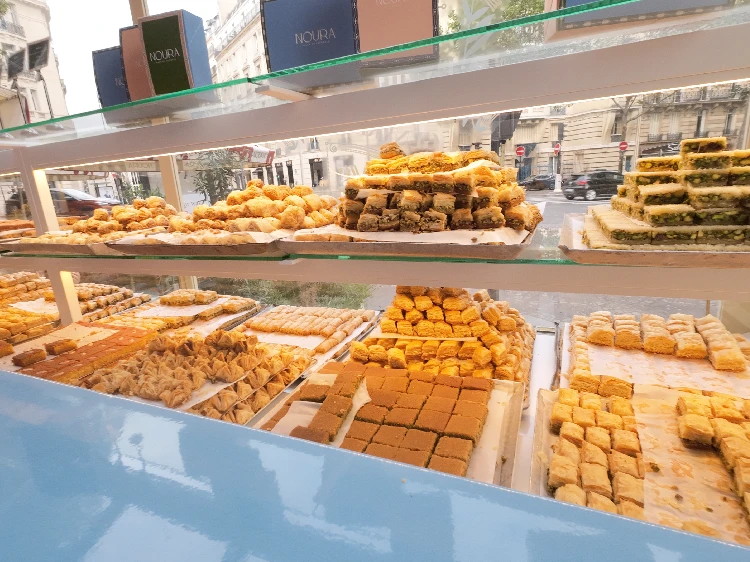
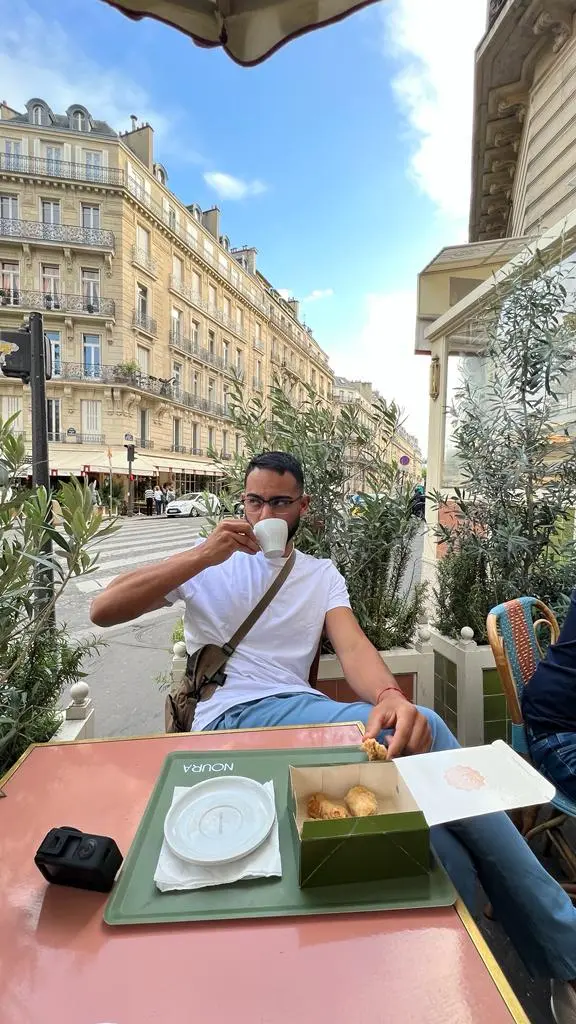
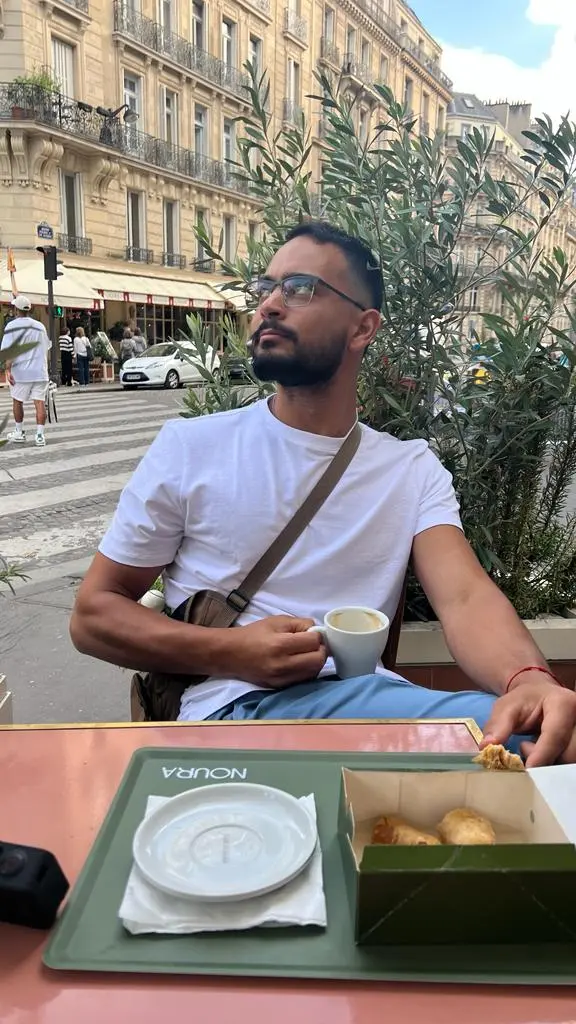
We continued along the avenue until we reached the River Seine. We crossed the same Pont de l’Alma as the day before, but this time we left the bridge and went to the left. We walked along the edge of the River Seine, along the Promenade Gisèle Halimi, in honor of the same. Gisèle Halimi was a prominent French lawyer, feminist, and women’s rights activist. She was born in Tunisia and later moved to France, where she became a well-known advocate for women’s rights and social justice. Throughout her life, she played a significant role in advancing women’s rights and challenging discriminatory practices.
Visiting the Esplanade des Invalides, Paris
We passed by the Fluctuart – Centre d’art urbain, under the Pont des Invalides, La Traversée des invalides, until we reached the Pont Alexandre III. This area of the city is incredibly beautiful, I loved it. We took the opportunity to take photos. We walked to the Esplanade des Invalides, a huge garden surrounding you on all sides. There are lots of people sitting there, not as many as on the Champ de Mars, but there were still some people. Some were picnicking, others dancing, eating, lying on the grass, reading, relaxing, there were couples too.
A bit about the Esplanade des Invalides
The Esplanade des Invalides is a grand open space located in the heart of Paris, France. It stretches out in front of the Hôtel des Invalides, a historic complex known for its military history and stunning architecture. The esplanade offers a picturesque setting that blends historical significance with contemporary charm, making it a popular spot for both locals and tourists.
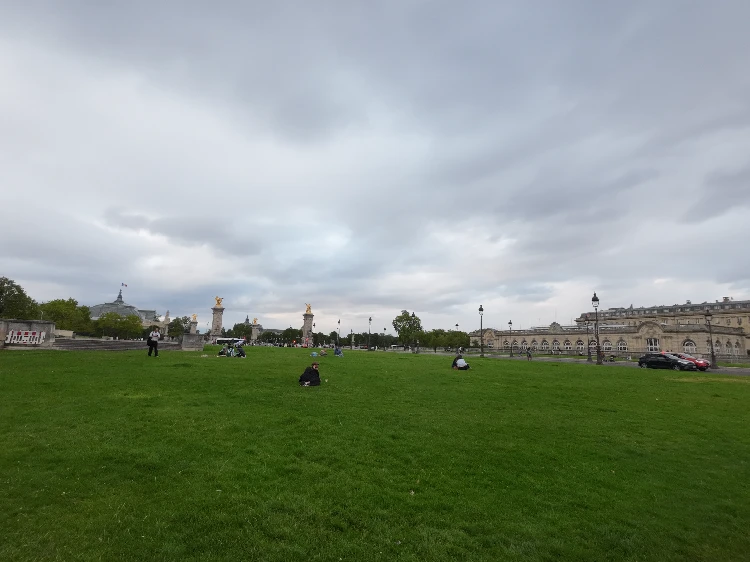
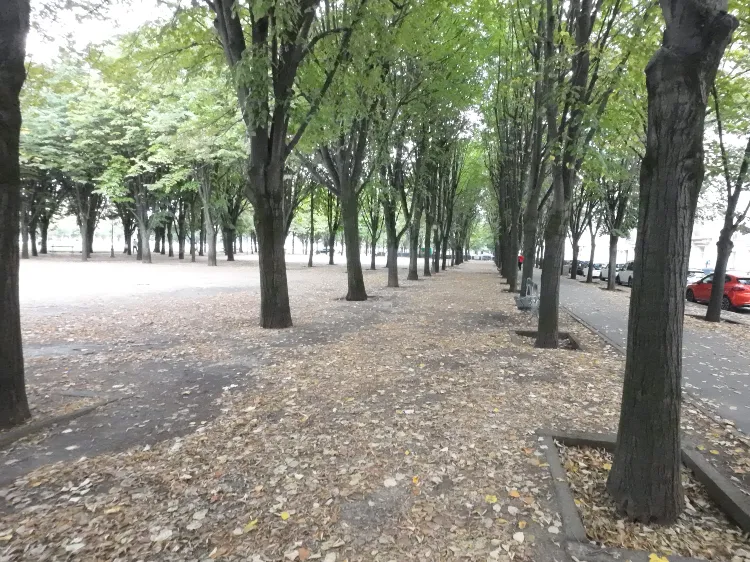
The Hôtel des Invalides itself was built during the 17th century as a residence and hospital for disabled war veterans. Its golden dome, known as the Dôme des Invalides, is a prominent feature of the Parisian skyline and serves as a testament to the city’s rich history. The tomb of Napoleon Bonaparte is also housed within the complex, adding to its significance as a symbol of France’s past.
Surrounded by elegant gardens and flanked by imposing structures, the Esplanade des Invalides provides a sense of grandeur and tranquility. Visitors can enjoy leisurely strolls, relax on benches, or simply take in the view of the Hôtel des Invalides and its dome. The esplanade’s design, characterized by its symmetry and open layout, creates a sense of space that contrasts the bustling city atmosphere.
Throughout the year, the Esplanade des Invalides hosts various events and gatherings, from cultural festivals to military parades. It’s a place where history, architecture, and contemporary life come together, offering a unique glimpse into Parisian culture. Whether you’re admiring the impressive facade of the Hôtel des Invalides, enjoying a leisurely afternoon, or attending one of the many events, the Esplanade des Invalides offers an enriching experience in the heart of the French capital.
From the Esplanade des Invalides to the Eiffel Tower
From the Esplanade des Invalides, we took the Rue de l’Université towards the Eiffel Tower. It’s quite a long street and it takes about 30 minutes to walk to the tower, but don’t worry, walking in Paris is the best way to get to know the city. We passed the Musée du Quai Branly.
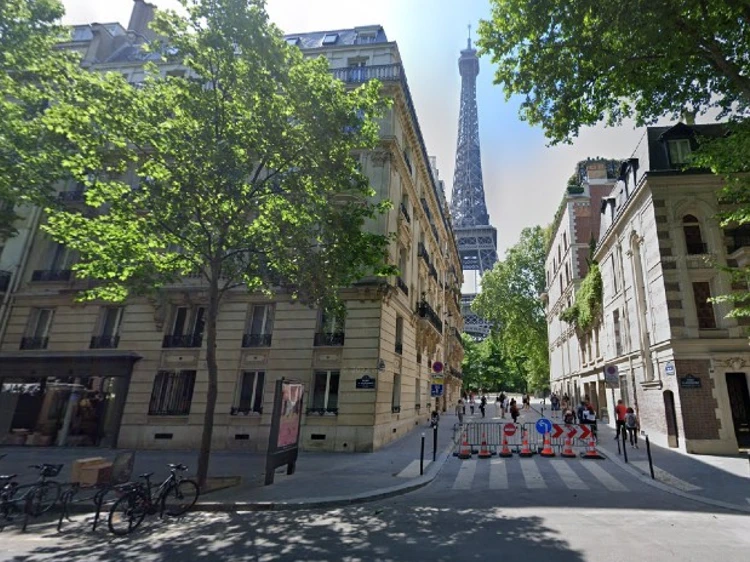
Quai Branly Museum
The Musée du Quai Branly, located in Paris, is a museum dedicated to the arts and cultures of indigenous peoples from Africa, Asia, Oceania, and the Americas. The museum’s name is derived from its location along the Quai Branly, a street that runs along the Seine River near the Eiffel Tower.
The museum’s collection is vast and diverse, encompassing a wide range of artifacts, artworks, and cultural objects that showcase the rich heritage and traditions of these diverse regions. The exhibits highlight the artistic, spiritual, and social aspects of indigenous cultures, providing insight into their unique worldviews and ways of life.
The architecture of the museum is also notable. It was designed by architect Jean Nouvel and features a contemporary design that incorporates greenery and natural elements, such as vertical gardens and a rooftop terrace. This innovative design creates a harmonious blend between the museum’s modern aesthetic and the traditional artifacts it houses.
The Musée du Quai Branly aims to foster cultural understanding and appreciation by showcasing the beauty and complexity of indigenous cultures from around the world. It offers visitors an opportunity to explore and learn about lesser-known cultures and their contributions to global heritage. Whether you’re interested in anthropology, art, or simply gaining a deeper understanding of the world’s cultural diversity, the Musée du Quai Branly offers a unique and enriching experience in the heart of Paris.
Before we actually climbed the tower, we saw that there was a market going on right in front of it, with lots of stalls selling traditional food, meat, chips, kebab, pasta and various other things. So we went to eat, I was starving. I spent about 15 euros to eat a kind of kebab on a plate, lots of fried potatoes with meat and bacon.
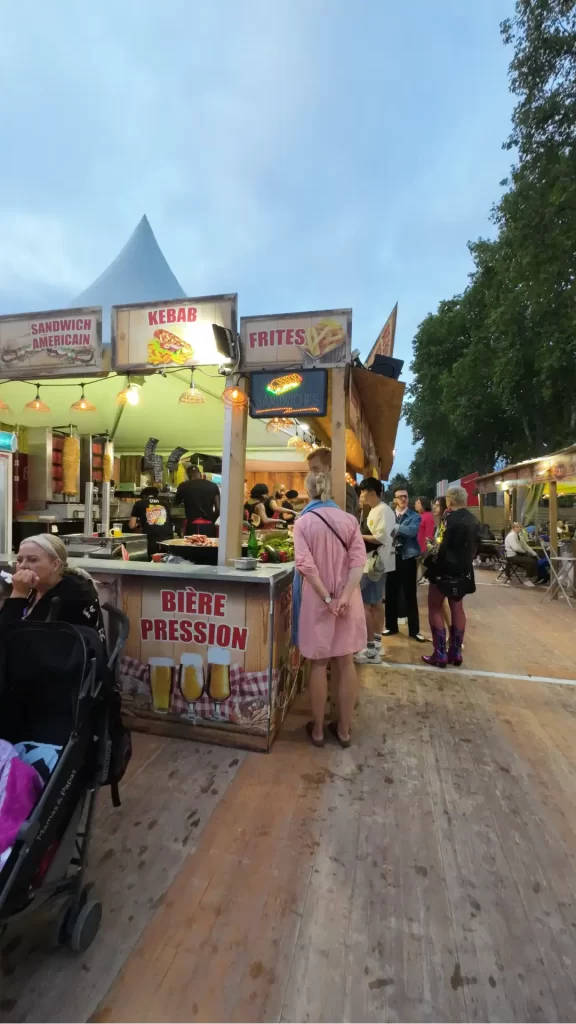
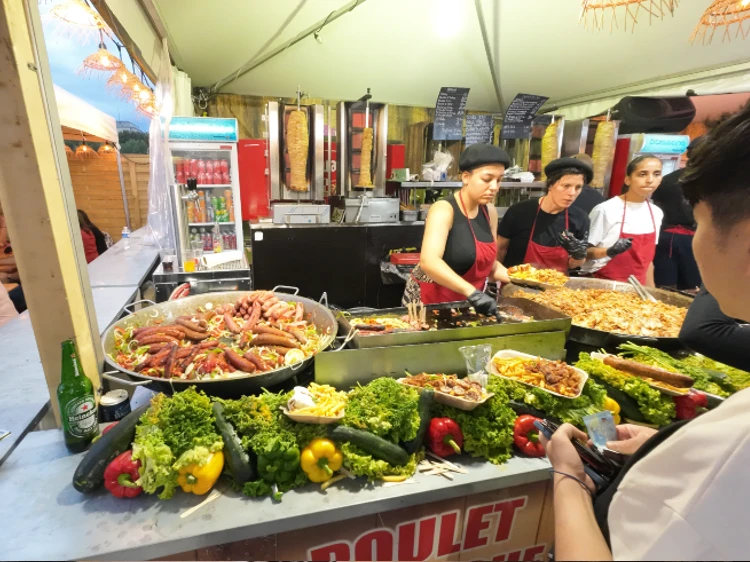

Climbing the Eiffel Tower
Following Rue de l’Université, you’ll come across this scene below, with a beautiful view of the Tower. From there you know where to go, just go straight and turn left towards the ticket office, which is a 2-minute walk away. It’s free to enter the park and see the tower up close, you just have to go through the metal detector. Inside, you can walk around as much as you like and decide whether to take the elevator or the stairs up the tower. You are also not obliged to go up the tower, but you can stay down there and take pictures.
We went to the elevator ticket office by mistake and wanted to take the stairs. We even bought the ticket to go up by elevator, when we realized that it was the wrong queue, so we asked to change the ticket if possible, and the saleswoman kindly gave us the money to go and buy it at the other ticket office for the stairs.
How much does it cost to climb the Eiffel Tower?
I paid 21.5€ to go up the Eiffel Tower via the stairs to the third level, the adult price. Remember that you will go up the stairs to the second floor and to the third floor only by elevator. To take the elevator from the ground to the top of the tower you pay 28.30€.
To go up to the 2nd floor by stairs you will pay 11.30€. To go up to the 2nd floor by elevator you will pay 18.10€.
The sources for this research were taken from the website Tour Eiffel. Besides, I went there myself, paid for the tickets and climbed the tower.
The tower is divided into 3 levels. The 1st floor is 57 meters away, the 2nd floor is 116 meters away and the 3rd floor is 276 meters away. You can access the 2nd floor by elevator or stairs, both at a different price. The third and final floor is only accessible by elevator from the 2nd floor.
How long does it take to climb the Eiffel Tower?
It takes about 20 minutes to go up to the first floor via the stairs, climbing and stopping to rest little by little, without rushing, so you can enjoy the experience more. As you go up, the view gets more and more beautiful.
It takes about 15 minutes to get from the first floor to the second by stairs. By elevator, it takes less than 3 minutes.
From the 2nd floor to the 3rd floor by elevator takes about 3 minutes. What takes a while is the queue to access the elevator, which is always full, but it’s definitely worth it.
What’s it like to climb to the top of the Eiffel Tower?
The experience is unique and worth every minute spent climbing the stairs. I strongly recommend that you take the stairs if it’s possible for you, you can see every detail of the tower, the screws, the metal connections, all the pieces fitted together perfectly, so you get to know the tower better. And imagine that the whole structure has been standing since 1889. That way you can relive history in front of your eyes.
I took the opportunity to take an epic photo for myself. Double biceps from the top of the Eiffel Tower is really only for a few people, so I took advantage of the fact that there were only a few people passing by at the time, quickly took off my shirt and asked Ingrid to take some quick photos. And here are some of the photos we took.
What does the Eiffel Tower represent to France?
The Eiffel Tower, an iconic symbol of Paris and France, is one of the world’s most recognizable landmarks. This wrought-iron marvel stands majestically in the Champ de Mars park on the banks of the Seine River. Built as the centerpiece of the 1889 Exposition Universelle (World’s Fair) to celebrate the 100th anniversary of the French Revolution, the tower was initially met with mixed reactions but has since become a beloved emblem of Parisian culture.
Designed by engineer Gustave Eiffel, the tower stands at an impressive height of 324 meters (1,063 feet), making it the tallest structure in Paris. At the time of its completion, it held the distinction of being the tallest man-made structure in the world until the Chrysler Building was constructed in New York City in 1930.
The Eiffel Tower is characterized by its intricate lattice framework, which showcases the architectural prowess of the late 19th century. Comprising over 18,000 individual iron parts, it was assembled with remarkable precision. While its initial purpose was to serve as a temporary exhibit, its enduring popularity and usefulness as a radio transmission tower ensured its survival long beyond the World’s Fair.
Visitors can ascend the Eiffel Tower for breathtaking panoramic views of the city. The tower’s three levels offer different viewing heights, and the topmost platform provides an unparalleled vista of the sprawling Parisian landscape. The tower is particularly enchanting at night when it is illuminated with sparkling lights, a spectacle that occurs for a few minutes at the beginning of each hour.
The Eiffel Tower remains an enduring symbol of artistic and engineering innovation. Its allure lies not only in its remarkable design but also in the emotions it evokes and the memories it creates for visitors from around the world. As you gaze upon its intricate lattice against the Parisian skyline, you’re reminded of the tower’s ability to transcend time and capture the imagination of all who encounter it.
Descending the Eiffel Tower
As the saying goes, every saint helps to get down. We stayed there until the last elevator, a little after 23:00. To take the elevator down from the top of the Tower took about 4 minutes, very fast.
I gradually said goodbye to the Eiffel Tower. It was my first time visiting Paris. It was never on my list of priorities to visit Paris, but it happened by chance, I had the opportunity to go there to see a friend, with someone special who wanted to see Paris, so we went together. It’s not my favorite type of tourism, but I confess I was very happy and surprised to visit Paris. It was a different experience that left me wanting more. I do want to go back to Paris in the future and explore the city more, make friends there and spend a lot of time exploring the streets. Thank you Paris!
Trouble coming home
On my way down the tower, my friend Josue calls me to ask what time I’ll be back and tells me that the subway stops running at around 23:00. He told me this at 23:30. I realized I had a bit of a problem, so I rushed into a metro station and took the next train there, believing it would take me closer to home. As it turned out, I took the train on the opposite side, which took me further away. So we climbed the stairs and were ushered out by the security guards, after all, the station was already closing.
The solution? We discovered that there was a night bus in Paris that runs from 0:30 until 5:30.
The bus that runs in Paris at dawn is called Noctilien. It’s the night bus that runs on the île-de-France and its conurbation.
Leaving the metro station where we’d been expelled, we went to the nearest bus stop, where we met some people and I ended up asking a few questions, looking for information on how to get some form of transportation. That’s when I heard about Noctilien. I immediately went to the Noctilien website to find out where it was. You can also see it on Google Maps. When you enter a location you want to go to, Google Maps will make the connection using Noctilien’s services. We paid €2.10 per ticket.
For more information on the Noctilien in Paris, visit this official link.
As a result, we took the Noctilien to the border between Paris and Combs-la-Ville, from where we took another regional bus to the final location, stopping at Boussy-Saint-Antoine Station in Combs-la-Ville. After arriving, we had another 20-minute walk to Josue’s house. Fortunately, he had left the key with us. We went to bed at about 4.30 in the morning.
